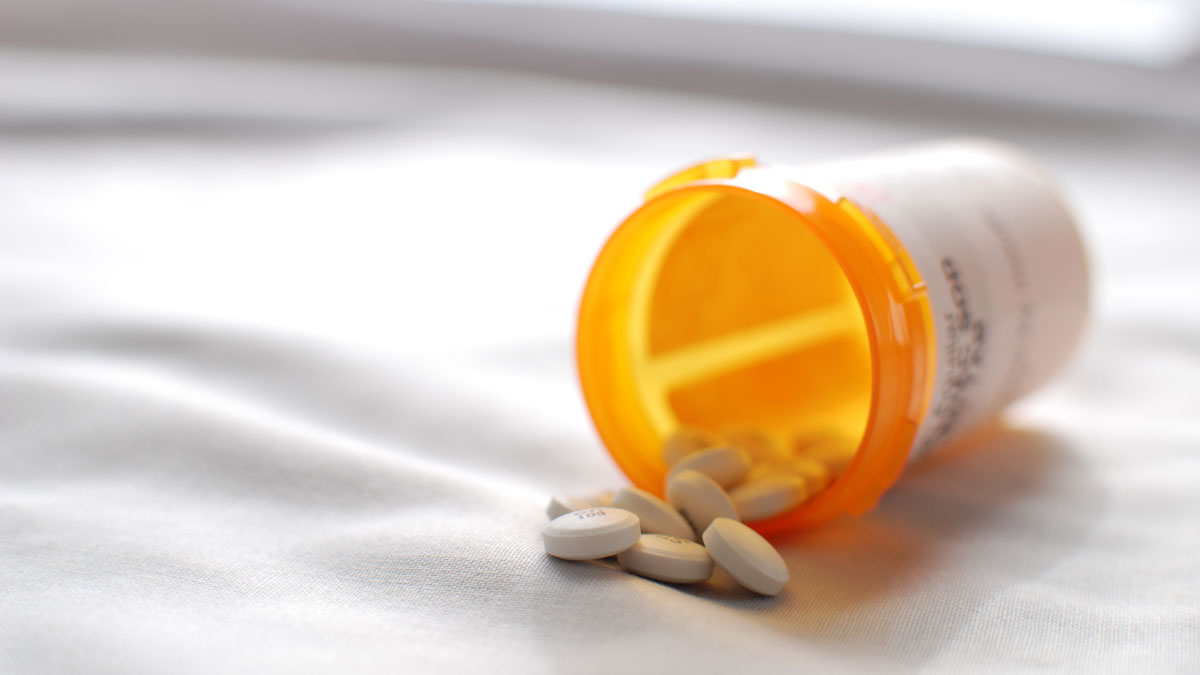Substances | 3 min read
Is Gabapentin an Opioid? Drug Facts, Uses, and Side Effects
Medically Reviewed By

On December 4, 2023
Written By
On December 4, 2023

What you will learn
- Gabapentin is a Schedule V drug.
- Gabapentin is mostly used to treat seizures and pain remaining from a shingles attack.
- Mixing gabapentin with opioids will increase its potential for abuse.
- Mixing gabapentin with other drugs can lead to an overdose and death.
What Is Gabapentin’s Drug Class?
Is gabapentin an opioid? Many people think so due to how it treats pain, but this is not the case. This substance falls into a separate category known as an anticonvulsant.
However, just because gabapentin isn’t an opioid doesn’t mean it is free from any potential abuse.
Gabapentin is a Schedule V drug, which means it is less addictive than other types of medication, like opioid painkillers, which are Schedule II drugs. Despite this low risk, there is always a chance that a person could become addicted or dependent on the substance.
The FDA approved this medication in 1993, and it was initially meant to treat muscle spasms and act as a muscle relaxant.[1] It was later discovered that this medication is also beneficial for treating seizures, certain types of pain, and even restless leg syndrome. It does this by slowing down the central nervous system.
Doctors may also occasionally prescribe this medication to people for off-label uses, including treating pain for fibromyalgia, neuropathy, hot flashes during menopause, anxiety, irritable bowel syndrome, PTSD, and to manage alcohol withdrawal symptoms. While this medication can be helpful for these conditions, most doctors prefer to stick to using it for conditions it was approved to treat.
However, an excess of off-label prescriptions could lead to an increase in addictions.
How Do People Use and Misuse Gabapentin?
When taken as prescribed, gabapentin will not cause any sense of euphoria or any other potentially addictive feelings. However, there are always ways to misuse drugs, even those with low potential for abuse. Misuse may involve taking too many pills at once or crushing and snorting or injecting the medication.
No matter how low the abuse potential, the risk of addiction skyrockets when you mix gabapentin with opioid painkillers.
The Dangers of Mixing Gabapentin With Opioids
Many people will start misusing gabapentin for pain. If the pain relief still doesn’t work with an increased dose, the person may try to get a prescription for opioid painkillers with gabapentin.
Opioids cause a sense of euphoria. Some people get addicted the moment they experience this feeling. This feeling is then followed by fatigue, depression, and body pain. This is known as dysphoria.
Some people can’t stand the feeling of dysphoria and immediately return to using more drugs to keep feeling good. This drastically increases a person’s risk of overdosing and experiencing other dangerous symptoms.
In 2020 alone, out of the 58,362 people who died from drug overdoses, 5,687 had gabapentin in their systems.[2]
When you mix gabapentin with opioids, respiratory depression can result.[3] This is when your breathing becomes very shallow and weak. A person can stop breathing if the respiratory depression gets too severe.
This could lead to hypoxia, a condition when the body and brain are deprived of oxygen. The longer the brain lacks oxygen, the more damage it will sustain, which is often permanent. If the hypoxic state lasts too long, the person will eventually die.
While mixing gabapentin and opioids may relieve a person’s pain, it is not worth the potentially fatal risks.
And once opioids are in the mix, drug addiction becomes a significant likelihood.
The Side Effects of Combining Gabapentin and Opioids
The most common side effects of gabapentin include nausea, diarrhea, vomiting, headaches, dry mouth, fatigue, and unsteadiness. Some people may also experience mood changes, swollen arms, and legs, or blurred vision. Taking opioids with gabapentin can make these side effects much worse, and will continue to worsen over time.
Gabapentin and opioids will eventually harm your liver after taking them for several years. The liver is the primary organ that breaks down drugs. If it is overworked by breaking down a constant supply of drugs, it will eventually sustain damage and have trouble functioning. This can lead to a fatty liver, liver cirrhosis, and sometimes liver failure. This becomes even more common if you mix alcohol with gabapentin and opioids. This increases a person’s risk of overdose and death as well.
Help is Available for Gabapentin Misuse
Although gabapentin is not an opioid or narcotic but rather an anticonvulsant and is a relatively safe medication, it can still be abused, especially when mixed with opioids. If you or someone you know is suffering from misusing gabapentin–especially if this medication is being mixed with opioids–help is available.
Frequently Asked Questions About Gabapentin
Gabapentin is a relatively safe drug but can become dangerous if misused. Taking too many gabapentin pills or mixing them with opioids can have potentially fatal effects. This can lead to an overdose, permanent brain damage, or death. Long-term use may also cause liver damage and other problems.
The primary risk of mixing these two medications is respiratory depression. This can cause a person to stop breathing. The brain will shut down and die when insufficient oxygen is in the body. Taking both of these medications at once can also lead to organ damage.
Gabapentin is approved to treat postherpetic neuralgia, a chronic burning pain resulting from shingles. Gabapentin treats this pain by suppressing the central nervous system. It may also work this way for off-label uses to treat fibromyalgia, neuropathy, and other forms of physical discomfort.
Ascendant New York Editorial Guidelines
Here at Ascendant New York, we understand the importance of having access to accurate medical information you can trust, especially when you or a loved one is suffering from addiction. Find out more on our policy.
[1] Yasaei R, Katta S, Saadabadi A. Gabapentin. [Updated 2022 Dec 19]. In: StatPearls [Internet]. Treasure Island (FL): StatPearls Publishing; 2023 Jan-. Retrieved from https://www.ncbi.nlm.nih.gov/books/NBK493228/ on 2023, May 28.
[2] Bridget M. Kuehn, M. (2022, October 4). Growing role of gabapentin in opioid-related overdoses highlights misuse potential and off-label prescribing practices. JAMA. Retrieved from https://jamanetwork.com/journals/jama/article-abstract/2796287 on 2023, May 28.
[3] Peckham, A. M., Ananickal, M. J., & Sclar, D. A. (2018). Gabapentin use, abuse, and the US opioid epidemic: the case for reclassification as a controlled substance and the need for pharmacovigilance. Risk management and healthcare policy, 11, 109–116. Retrieved from https://www.ncbi.nlm.nih.gov/pmc/articles/PMC6103607/ on 2023, May 28.




